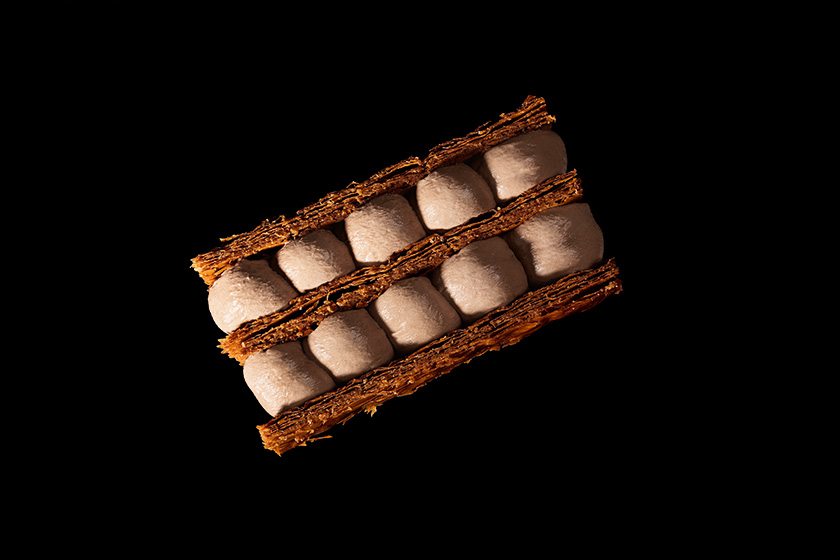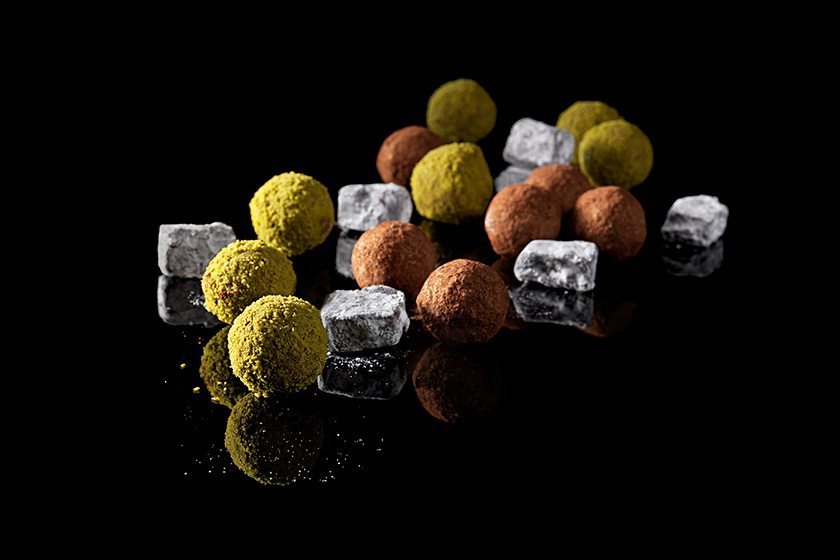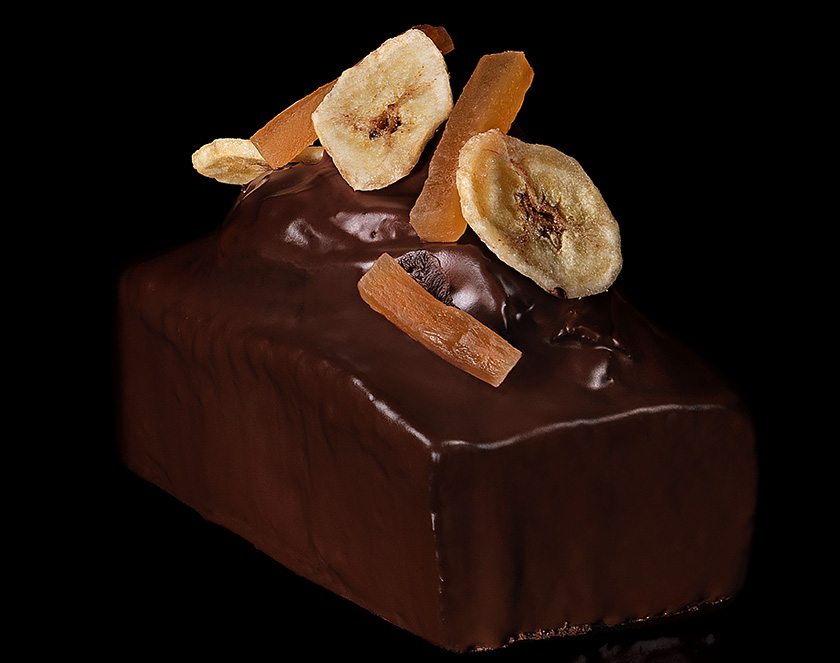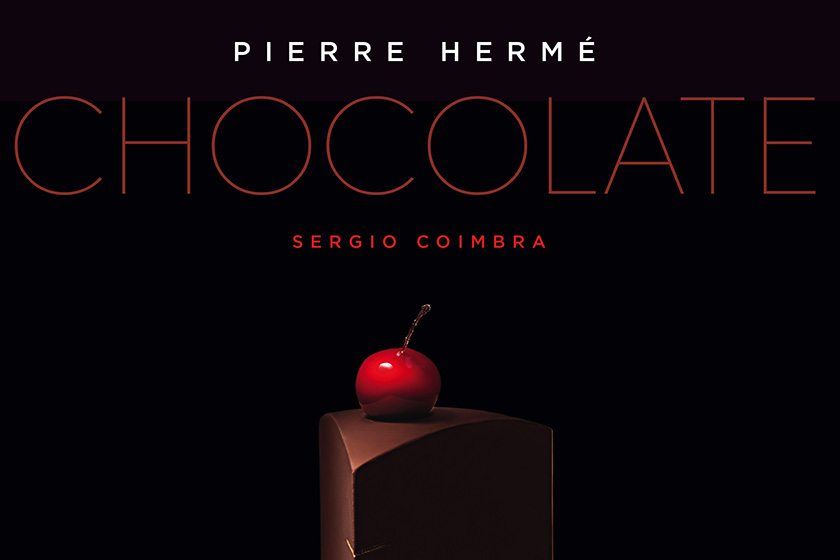This Week: National Chocolate Week Recipes
Challenge yourself this Chocolate Week with recipes from the 'Picasso of Pastry'...
This post may contain affiliate links. Learn more
In the celebration of National Chocolate Week, running from 9th-15th October we’ve gathered together some mouth-watering recipes from Pierre Hermé’s book, Chocolate.
Learn more about some of chocolate’s surprising health benefits too.
Chocolate Fact:
Theobrama cacao is the scientific name for the tree from which the victim of our devilish addiction stems. Meaning ‘food of the gods’ (pah, what else?) chocolate has, from its very roots, been associated with the utmost luxury. Considered more valuable than gold dust in Mayan times, the cocoa bean was used as currency, while the Aztec emperor Montezume II very much cultivated the ‘treat yourself’ lifestyle, enjoying the (questionable) benefits of 50 cups of chocolate a day. In fact, chocolate was consumed in its liquid form for over 90% of its history – making choc-tails undeniably the most appropriate way to celebrate this week guilt free.

Pierre Hermé’s Mille Feuille, (c) Sergio Coimbra, Chocolate by Pierre Hermé & Sergio Coimbra, 2016, Flammarion
Chocolate Feast: Infiniment Chocolat Mille-Feuille
Serves 10
Preparation Time: About 45 mins. (1 day in advance); 45 mins. (the same day).
Chilling Time: 3 x 1 hr. (1 day in advance); 2 hr. + 1 hr. (the same day).
Cooking Time: A few minutes (1 day in advance); about 1 hr. (the same day).
INGREDIENTS
Caramelized Inverted Puff Pastry:
1 2/3 cups (13 1/4 oz./375 g) butter at room temperature
1 3/4 cups (5 1/3 oz./150 g) flour
+ for the détrempe:
1/2 cup (4 oz./110 g) butter
2/3 cup (5 1/3 oz./150 g) mineral water
1/2 teaspoon white vinegar
1 tablespoon (1/2 oz./15 g) Fleur de sel, preferably Guérande
4 cups (12 1/3 oz./350 g) flour
Confectioners’ sugar
Dark Chocolate Chips:
1 1/4 teaspoons (6 g) Fleur de sel, preferably Guérande
10 1/2 oz. (300 g) Araguani 72% dark chocolate (Valrhona)
Pastry Cream:
1 3/4 tablespoons (1/3 oz./9.5 g) flour
1/4 cup (1 oz./34 g) flan powder or corn starch
1 1/3 cups (11 3/4 oz./335 g) whole milk
3 1/3 tablespoons (1 1/3 oz./40 g) superfine sugar (divided)
1/3 cup (2 3/4 oz./80 g) egg yolks
2 1/3 tablespoons (1 oz./33 g) butter
Pure Origin Peru Chocolate Pastry Ganache:
5 2/3 oz. (160 g) Pure Origin Peru chocolate
3/4 oz. (20 g) pure cocoa paste (Valrhona)
2/3 cup (5 oz./140 g) whole milk
Pure Origin Peru chocolate Pastry Cream:
600 g pastry cream (prepared with the ingredients above)
300 g Pure Origin Peru chocolate pastry ganache (prepared with the ingredients above)
Infiniment Chocolat Pure Origin Peru Cream:
17 2/3 oz. (500 g) Pure Origin Peru chocolate pastry cream (see recipe above)
7 tablespoons (3 1/2 oz./100 g) liquid cream
Finishing:
Cellophane paper
PREPARATION
One day in advance, prepare the puff pastry:
In the bowl of a mixer or a processor fitted with a plastic blade, mix 1 2/3 cup (13 1/4 oz./375 g) softened butter to a creamy texture. Add the flour and mix until it forms a ball. Turn the dough onto a sheet of cooking parchment and form into a flat rectangle about 3/4 in. (2 cm) thick. Wrap in plastic film. Let rest in the refrigerator for one hour. For the détrempe, melt 1/2 cup (4 oz./110 g) butter slowly over low heat. Let cool. Combine the mineral water, vinegar and Fleur de sel in a mixing bowl. Add the flour and the cooled melted butter. Combine, mixing as little as possible. Form the dough into a flat square of about 3/4 in. (2 cm) thick. Wrap in plastic film, let rest in the refrigerator for one hour.
Dust the butter–flour rectangle with a little flour, roll out lengthwise into a 1/3 in. thick sheet about twice as long as the détrempe. Place the détrempe in the center of the first sheet of dough. Fold the ends of the dough over the détrempe square to enclose it completely as within an envelope. Using a rolling pin, tap the surface of the dough lightly, then roll out, rolling from the center toward the ends, to form a rectangle three times longer than the width. Fold the bottom quarter of the dough up toward the center, then fold the top quarter down toward the center so that the edges of the two flaps meet. Fold the dough in half and place in the refrigerator to chill for one hour. When chilled, place the dough square on a lightly floured work surface, with the folded edge to your left, and repeat the same rolling and folding procedure. Flatten the dough square lightly, cover and refrigerate overnight.
Prepare the chocolate slivers:
Crush the Fleur de sel with a rolling pin. Sift through a fine sieve. Chop the chocolate with a serrated knife and place it in a bowl over a bain-marie of simmering water, stirring gently with a wooden spoon until the temperature of the chocolate reaches 130°F (55°C). Remove the bowl immediately from the bain-marie and place it in a bowl of cold water with four or five ice cubes. Stir the chocolate from time to time, scraping it from the sides of the bowl toward the center as it begins to set. Once the chocolate has cooled to 80°F (27°C), return the bowl to the bain-marie, monitoring the temperature carefully with a thermometer until the chocolate warms to between 88°F and 90°F (31°C–32°C). Stir in the sifted Fleur de sel. Place a large sheet of rhodoid plastic* on a work surface. Pour the chocolate onto the plastic and using a spatula, spread into a thin, even layer. Cover the chocolate with a second sheet of rhodoid and top with light weights to keep the sheet of chocolate flat. Refrigerate until the following day.
The following day, weigh out 1 1/3 lb. (660 g) of the puff pastry for the mille-feuille. (Refrigerate or freeze the remaining dough for another use.) Place the square of puff pastry on a lightly floured work surface with the folded edge to your left. Roll out, as before, into a long rectangle. Fold up the bottom third of the dough rectangle over the center, then fold the top third over the first third. Refrigerate to rest for thirty minutes. Cut the dough square into three equal parts. On a floured work surface, roll each piece of dough out to a rectangle of 8 1/2 x 10 in. (22 cm x 26 cm), about 1/16 in. thick. Lift the dough from time to time with your hands, sliding it on the work surface to allow it to retract. Trim the edges of the three rectangles evenly, so they are all the same size. Prick the surface of each with a fork and refrigerate to rest for two hours.
Line two pastry sheets with cooking parchment and brush lightly with water. Place the rectangles of puff pastry on the baking sheets. Preheat the oven on convection setting to 355°F (180°C/Gas Mark 6). Sprinkle the puff pastry rectangles evenly with sifted sugar. Place in the oven and bake for about ten minutes. Remove from the oven and place a pastry rack on top of the puff pastry on each pastry sheet, pressing down lightly, to prevent the pastry from rising too much. Return the pastry sheets topped with their racks to the oven to bake for an additional thirty minutes.
Remove the pastry sheets from the oven. Remove the racks, cover each sheet of puff pastry with cooking parchment and carefully invert each with the aid of a pastry sheet onto the work surface. Slide the inverted dough onto pastry sheets again, removing the cooking parchment. Sprinkle with sifted confectioners’ sugar. Return the pastry to the oven preheated on convection setting to 450°F (230°C/Gas Mark 7–8) and let caramelize for five to seven minutes, watching carefully. Remove from the oven and let the pastry rectangles cool, shiny, caramelized side up.
Prepare the pastry cream:
Sift the flour with the flan powder. Combine the milk and one tablespoon (15 g) of the sugar in a saucepan, and bring to a boil. Whisk the remaining sugar with the egg yolks in a bowl. Add the sifted flour and flan powder. Pour the warm milk over the egg–flour mixture, whisking briskly. Pour the mixture back into the saucepan, bring to a boil and cook, stirring constantly, for five minutes. Remove from the heat and let cool. When the pastry cream reaches 122°F (50°C), stir in the butter. Press a sheet of plastic film onto the surface of the cream.
Prepare the Pure Origin Peru chocolate pastry ganache:
Chop the chocolate and cocoa paste with a serrated knife, and place in a bowl. Bring the milk to a boil in a saucepan and pour, one-third at a time, over the chocolate, stirring from the center out in small, then progressively larger concentric circles. Mix with a hand blender until smooth. Place the bowl in a bain-marie of simmering water. Once the temperature has reached 130°F (55°C), add the pastry cream, mixing until smooth. Let cool to 77°F–85°F (25°C–30°C).
Prepare the Infiniment Chocolat Pure Origin Peru cream:
Once the chocolate ganache has cooled to 77°F–85°F (25°C–30°C), place 17 2/3 oz. (500 g) in a bowl. Place the cream in a bowl and whip to soft peaks with a whisk. Fold the whipped cream delicately into the chocolate ganache. Spoon into a pastry bag fitted with a basket-weave tip.
Assemble the Infiniment Chocolat mille-feuille:
Break half of the dark chocolate–Fleur de sel sheet into uneven fragments. Place the first rectangle of puff pastry on a work surface, caramelized side up. Pipe the chocolate cream in closely spaced waves onto the sheet of puff pastry. Sprinkle with fragments of dark chocolate. Place the second rectangle of puff pastry on top, caramelized side up, and pipe with waves of chocolate cream, as for the first layer. Sprinkle with chocolate slivers. Top with the third rectangle of puff pastry, caramelized side up. Let rest, refrigerated, for one hour before serving.
* Transparent plastic celluloid used in pastry and confectionery.
Chocolate Fact:
Chocolate can cut the risk of heart failure by as much as 1/3, with a square of dark chocolate lowering blood pressure and reducing the risk of heart attack and stroke by 39%. Most of the credit for this goes to flavonoids, the antioxidant compounds found in cocoa that increase the flexibility of veins and arteries – also the source of the avocado’s primary health benefit, making smashed avocado and Hotel Chocolat’s Chocolate and Hazlenut spread pretty much blood relatives when enjoyed on a nice piece of morning toast.

Pierre Hermé’s Matcha Truffles, (c) Sergio Coimbra, Chocolate by Pierre Hermé & Sergio Coimbra, 2016, Flammarion
Chocolate Feast: Milk Chocolate and Matcha Green Tea Truffles
Makes about 70 truffles
Preparation Time: 45 mins.
Cooking Time: About 18 mins.
INGREDIENTS
Roasted Pistachios:
7 oz. (200 g) whole pistachios, skinned
Milk Chocolate and Matcha Green Tea Ganache:
6 1/2 tablespoons (3 1/3 oz./95 g) butter
21 1/2 oz. (610 g) milk chocolate, 45% cocoa
4 3/4 tablespoons (1 oz./30 g) matcha green tea powder
2 1/2 cups (21 oz./600 g) liquid cream
Finishing:
Pistachio powder
PREPARATION
Prepare the roasted pistachios:
Preheat the oven to 340°F (170°C/Gas Mark 5–6). Spread the pistachios out on a baking sheet lined with cooking parchment. Place it in the preheated oven to toast the pistachios for about fifteen minutes, stirring and turning every five minutes. Remove and set aside to cool.
Prepare the milk chocolate and matcha green tea ganache:
Cut the butter into pieces. Chop the chocolate with a serrated knife and place in a bowl with the matcha green tea powder. Bring the cream to a boil. Pour it, one third at a time, over the chocolate and matcha tea powder, stirring from the center out in small, then progressively larger concentric circles. Once the temperature of the chocolate has reached 95°F–105°F (35°C–40°C), incorporate, little by little, the pieces of butter, whisking until the ganache is smooth.
Line the bottom and sides of a small baking dish with plastic film. Pour the ganache into the dish in a layer of about 1/3 in. (1 cm) thick. Cover with plastic film, pressing the film directly onto the surface of the chocolate. Refrigerate until the ganache is set.
Sprinkle the pistachio powder in a bowl. Remove the plastic film from the ganache and turn it out onto a cutting board. Cut into cubes of 1/3 in. (1 cm). Press a roasted pistachio into the center of each cube, then roll into a ball between the palms of your hands. Place the balls, one by one, in the bowl with the pistachio powder and roll to coat with the powder. Place the truffles in a sifter to remove any excess pistachio powder. Store in an airtight container.
And it doesn’t end there. The University of Nottingham has found that drinking cocoa rich in flavonols boosts the blood flow to key parts of the brain for 2 to 3 hours, improving performance and alertness in the short term. While the University of Oxford has considered chocolate’s long-term effects, by studying the diets of more than 2000 people over 70. Studies showed that those who consumed flavonol-rich chocolate, wine, or tea (I told you the good news wasn’t over) scored significantly higher on cognitive tests that those who didn’t.
Chocolate Fact:
Ok, not so much a health benefit, but something to keep in mind…
In 2004 70% of Londoners confessed they would reveal their passwords in exchange for a chocolate bar…

Pierre Hermé’s Chocolate Cake with Ginger and Banana, (c) Sergio Coimbra, Chocolate by Pierre Hermé & Sergio Coimbra, 2016, Flammarion
Chocolate Feast: Banana, Ginger and Chocolate Cake
Makes 2 rectangular cakes, each 7 1/2 x 3 in. (19 cm x 8 cm)
Preparation Time: 40 mins.
Cooking Time: About 3 hrs.
Chilling Time: 3 hrs.
INGREDIENTS
Fleur de sel Chocolate Cubes:
1/2 teaspoon (2.3 g) Fleur de sel, preferably Guérande
4 1/4 oz. (120 g) extra-bitter 67% chocolate
Cake Batter:
1 banana
Lemon juice 2 3/4 oz (80 g) candied ginger
1 1/3 cups (6 oz./170 g) flour
6 1/2 tablespoons (1 1/2 oz./45 g) cocoa powder
1 1/4 teaspoons (5 g) baking powder
1 cup (7 1/2 oz./210 g) butter
1 cup (7 1/2 oz./210 g) superfine sugar
4 large eggs
3 oz. (90 g) Fleur de sel chocolate cubes (see recipe above)
Melted butter and flour for the cake molds
Imbibing Syrup:
1/4 cup (2 oz./55 g) superfine sugar
2/3 cup (5 oz./140 g) mineral water
Chocolate Glaze:
5 2/3 oz. (160 g) Araguani 72% dark chocolate (Valrhona)
14 oz. (400 g) dark chocolate glaze (Valrhona)
3 tablespoons (1 1/3 oz./40 g) grape seed oil
Finishing:
Candied ginger
4 rounds of semi-dried banana
PREPARATION
Prepare the chocolate cubes:
Crush the Fleur de sel to a powder with a rolling pin. Sift through a fine sieve.
Chop the chocolate with a serrated knife and place it in a bowl over a bain-marie of simmering water to heat until melted. Stir the sifted salt into the chocolate. Pour the chocolate into a shallow dish lined with plastic film, to form a layer of about 1/3 to 1/2 in. (1 cm) thick. Tap the dish gently against the work surface to distribute the chocolate evenly in the dish. Refrigerate for at least three hours.
Once firm, cut the chocolate into cubes of about 1/3 to 1/2 in. Set them aside, separating the cubes to prevent them from sticking together.
Prepare the cake batter:
Preheat the oven to 140°F (60°C/Gas Mark 1–2). Peel the banana. Cut it in half, lengthwise. Place in a baking dish, sprinkle with drops of lemon juice. Place in the oven to dry for about one and a half hours. Remove the banana from the oven and increase the oven temperature, on convection setting, to 340°F (170°C/Gas Mark 5–6).
Set aside four rounds of the semi-dried banana and a little of the candied ginger for the decoration. Chop the remaining banana and the candied ginger into small cubes.
Sift the flour, cocoa powder and baking powder together into a bowl. Add the cubes of banana and candied ginger. Place the butter in the bowl of a mixer fitted with a paddle attachment and mix for about three minutes until the butter is creamy. Add the sugar and mix for five minutes, incorporating the eggs one at a time. Remove the bowl from the mixer and add the flour–cocoa mixture, folding with a spatula. Fold in 3 oz. (90 g) of the chocolate cubes. Brush the two rectangular (7 1/2 x 3 in./19 cm x 8 cm) cake molds with melted butter and sprinkle them with a little flour. Invert the molds and tap out excess flour.
Divide the batter equally among the two molds. Place in the oven and cook for ten minutes. Reduce the oven temperature to 320°F (160°C/Gas Mark 5–6) and bake for an additional forty minutes. Insert the tip of a knife in the center of the cakes to verify the cooking. If the knife comes out clean the cakes are ready.
Prepare the imbibing syrup:
Bring the sugar and water to a boil in a saucepan.
Prepare the chocolate glaze:
Chop the chocolate with a serrated knife and combine it with the chocolate glaze in a bowl over a bain-marie to melt to 113°F (45°C). Stir in the grape seed oil. Remove the cakes from the oven and unmold immediately onto a rack placed over a rimmed baking sheet. While the cakes are still hot, pour the sugar syrup over them three times. Set the cakes aside to drain and cool.
Bring the chocolate glaze to 105°F (40°C), reheating in a bain-marie or microwave if necessary. Pour it evenly over the cakes, and let drain. Decorate the top of the cakes with the reserved banana slices and candied ginger.
READ MORE: Chocolate, Cheese and Anchovies on toast from Paul A Young

